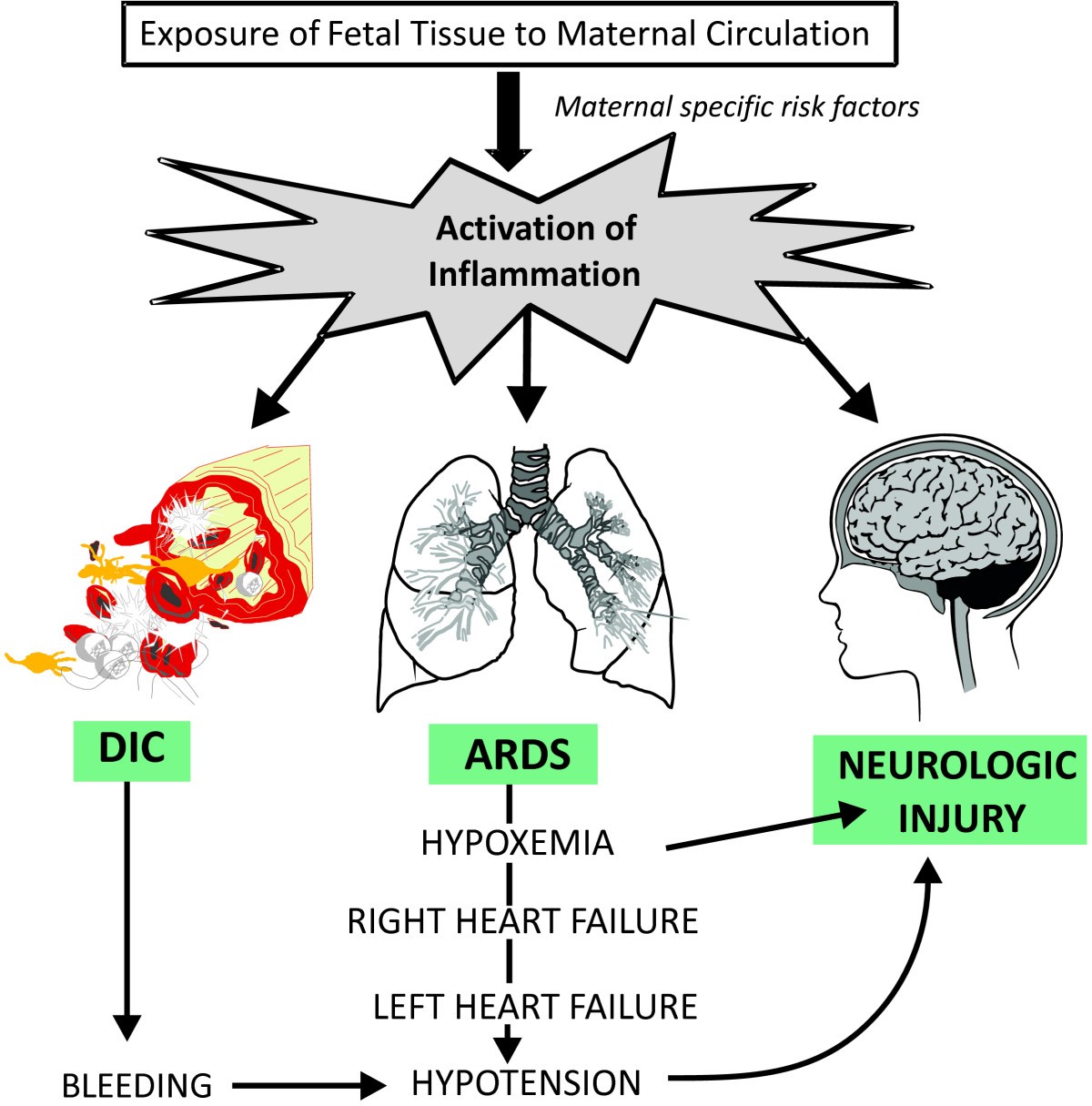
It has also been reported during early gestation, second trimester abortions, during amniocentesis, or following closed abdominal injury. Most cases of AFE (70%) occur during labour, 19% during Caesarean section, and 11% following vaginal delivery. If the fetus is alive at the time of event, nearly 70% will survive delivery but 50% of the survived neonates will incur neurological damage. Elements of presumed fetal origin were detected in 73% of those undergoing autopsy and in 50% of those in whom such evidence was sought during life by the examination of pulmonary artery catheter aspirate.

The majority of patients with AFE die within the first hour of onset of symptoms and about 85% of those who survive have permanent neurological impairment. However, despite this reduction, AFE still accounts for 4.7% of direct maternal deaths in the UK, 13% in France, 30% in Singapore, and up to 10% in the USA and Australia. The changing mortality rates are due to better resuscitation techniques, intensive care facilities, and early recognition. 3 The national registry from the USA suggested a mortality rate of 61%. In 1979, the suggested maternal mortality rate was 86% in the triennial report of 2000–2002, the mortality was 25%. 2 The number of maternal deaths due to AFE has fallen significantly over the last 20 yr. The true incidence of AFE is unknown, but has been reported to range from 1:8 000 to 1:80 000 pregnancies. Since then, a national registry has been developed by Clark in the USA 1 and by Tuffnell in the UK, resulting in the accumulation of numerous clinical reports and reviews.

They described it as a syndrome of sudden peripartum shock.

AMNIOTIC FLUID EMBOLISM MOST COMMON SITES SERIES
The clinical consequences became established in 1941, after Steiner and Lushbaugh published a maternal mortality case series of eight women who had squamous cells and mucin, presumably of fetal origin, within their pulmonary vasculature at postmortem. The entry of the amniotic fluid was first described by Ricardo Meyer in 1926. It occurs when amniotic fluid, fetal cells, hair, or other debris enter the maternal circulation. Amniotic fluid embolism (AFE) is a catastrophic obstetric emergency that can present as sudden, profound, and unexpected maternal collapse associated with hypotension, hypoxaemia, and disseminated intravascular coagulation (DIC).


 0 kommentar(er)
0 kommentar(er)
